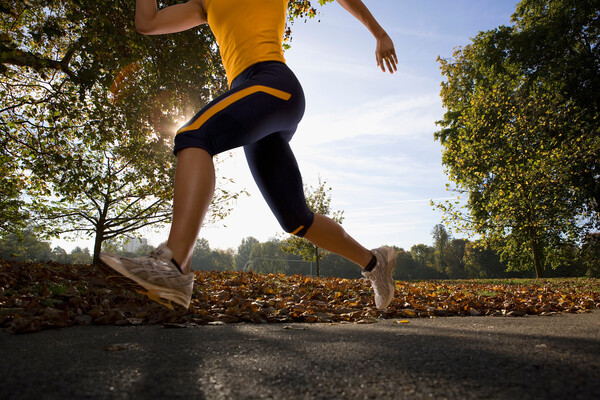Running activates and makes the muscles of the whole frame perform intensively – legs, arms and body. In this sense, it saves from hypodynamia – lack of mobility – and helps to tone the whole figure.
But is it possible to build a lot of strength through running? The answer is no. Is it possible to develop and build strength with the help of running?

Indeed, some runners do not look pumped up, but at the same time they seem to be embossed. The muscles of the figure work eccentrically when doing this sport. This means that a tense under load, and the muscle-tendon complex stretches and absorbs mechanical energy.
In addition, at first or after a very intense training, you can notice a slight increase in power volume – this is hypertrophy, which occurs due to the accumulation of lactic acid, fluid and due to the rush of blood.
Leg work while running
While doing this sport, the main job is done by the strength of the legs. True, the level of load and when and which part is turned on depends heavily on the intensity and duration of the job performed.
Hip flexors
The hip flexors are activated when the lower limb is raised high.
These are the five groups:
- rectus femoris
- iliac
- lumbar
- iliopsoas
- tailor’s
They are responsible for a lot of basic functional actions: lifting and moving the leg forward, lifting up, this sport itself, taking out the leg. They perform in conjunction with the abdominal and core parts.
Gluteal muscles
It has a direct effect on the buttocks. They are well felt when squatting, when running on a slope, and jumping.
These are the three main groups:
- gluteus maximus
- middle gluteal
- small gluteal
Interesting fact: the gluteus maximus is the strongest in the body, but it is no more important than the other two. Both the gluteus medius and minimus are essential for stabilizing the body and legs while running. They also exercise while sitting, standing and squatting.
Tibialis anterior
Located on the front of the leg. Turn on when you move your toes up. Responsible for stabilization, shock load containment. Weak parts can lead to such a common injury as inflammation of the periosteum. To strengthen, you need separate exercises, stretching, and massages.
Peroneal
Located on the sides of the legs. “Inversion” of the toes allows you to feel these muscles. They are responsible for bending the ankle back, stabilizing, and keeping the foot in the correct position.
The work of the upper part while running
The influence of this sport affects primarily the lower body, but the upper part is also worked out. Efficient, economical running requires strong arm and core parts.
The arms and body
Deltoid and shoulder muscles, biceps and triceps. They turn on when the arm moves relative to the opposite leg, they are responsible for stabilizing the body, its correct movement in the step, for moving the body forward.
The frame can be well felt during a long training for their fatigue and a feeling of “clogging”. And the arms and core muscles are really trained during sprints. They are, in fact, part of the speed machine of the sprinter’s body.
Abdominal muscles
The abs and core are the place of strength for a runner. A strong core is necessary for the harmonious functioning of all the core during running, good hip extension, holding the figure during long work, and to protect against excessive fatigue. It helps to maintain the correct running technique, maintain balance.
Remember this when running
You should not expect the same effect on figure from this sport as from strength exercises – it does not help build stature. However, contrary to ideas, he includes the muscles of the whole body in the training, although with different power, depending on the type of run and the intensity of exercise.
